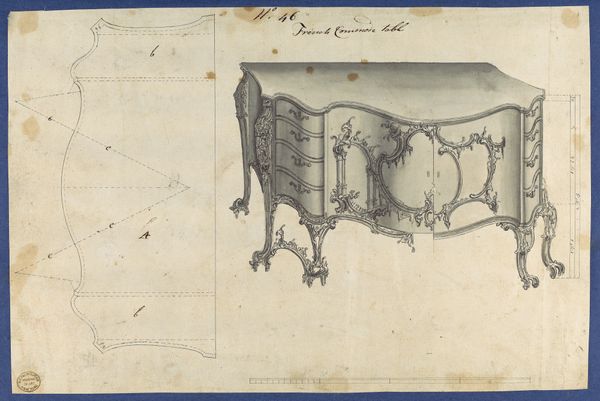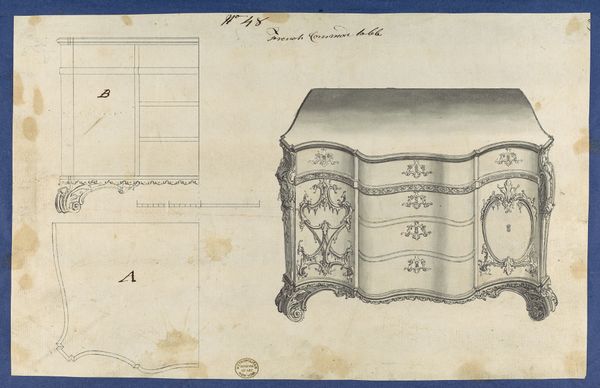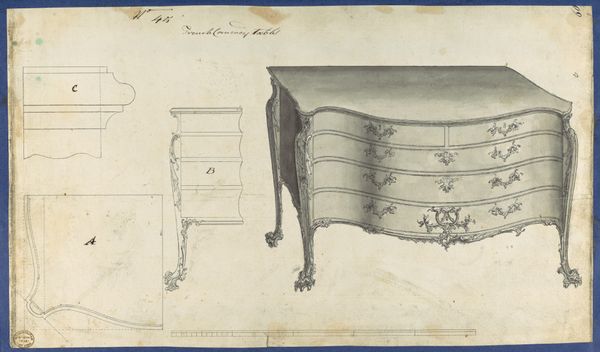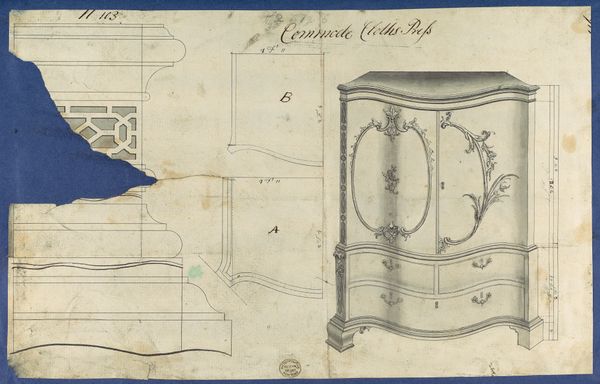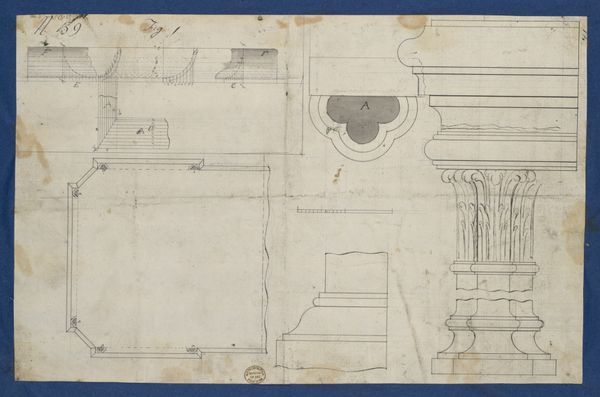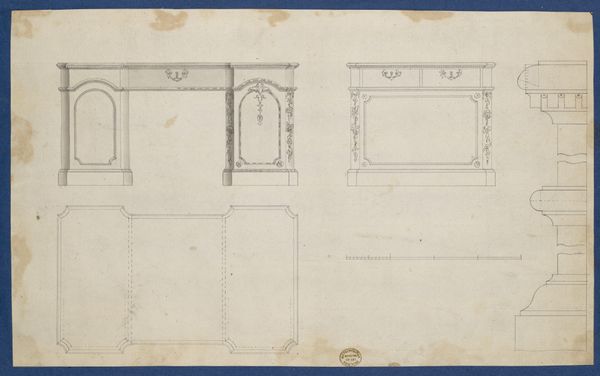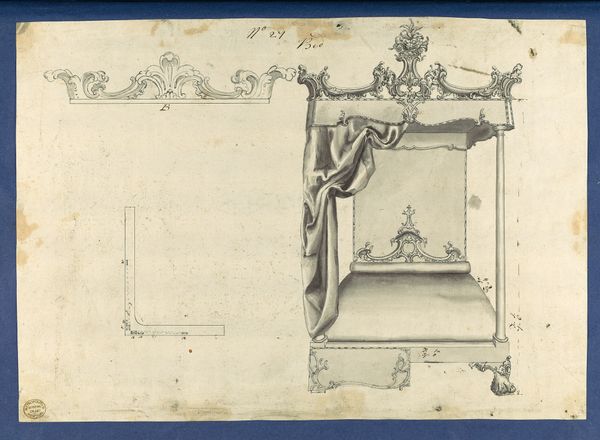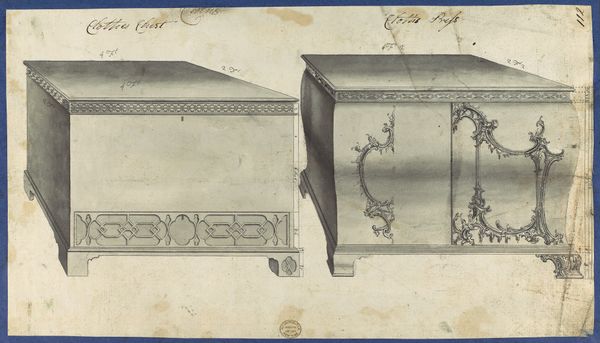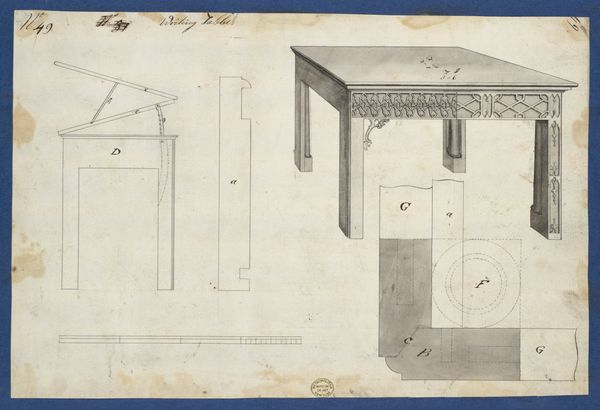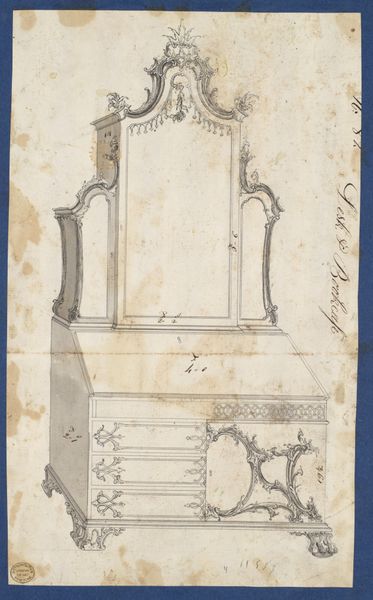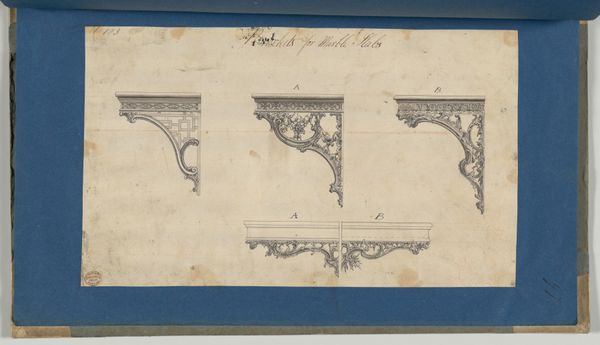
French Commode Table, from Chippendale Drawings, Vol. II 1753
0:00
0:00
drawing, print, etching, paper, pencil, engraving
#
drawing
# print
#
etching
#
paper
#
form
#
coloured pencil
#
pencil
#
line
#
sketchbook drawing
#
academic-art
#
decorative-art
#
engraving
#
rococo
Dimensions: sheet: 8 1/4 x 13 5/16 in. (21 x 33.8 cm)
Copyright: Public Domain
Editor: Here we have Thomas Chippendale’s "French Commode Table, from Chippendale Drawings, Vol. II", made around 1753. It's a drawing, a print actually, incorporating etching and engraving on paper. I find the intricate line work quite mesmerizing. How do you interpret this work? Curator: I see this drawing as more than just a design for furniture. It's a reflection of power and social hierarchy in 18th-century England. Chippendale's Rococo style, while seemingly decorative, speaks volumes about the aspirations and tastes of the wealthy elite who commissioned such pieces. Consider the social conditions. Who was invited to appreciate it? Where would such furniture be displayed, and what kinds of performances and interactions might have taken place there? Editor: That’s a really interesting point. I was only thinking about the aesthetic aspects, the craftsmanship. But situating it within the context of wealth and power makes me see it differently. How does this piece engage with ideas about identity? Curator: Well, think about it: owning a piece like this was a statement. It broadcasted the owner’s refined taste, their access to skilled labor, and, of course, their wealth. It was a visual signifier of their social position, a deliberate construction of identity. And consider the French influence; what does adopting that style say about cultural affiliations and aspirations at the time? Editor: So, it’s not just about having a beautiful piece of furniture; it’s about signaling something about yourself and your place in the world. I never thought about furniture having that kind of social impact! Curator: Exactly! These objects, while functional, were deeply embedded in complex social and political dynamics. Studying the aesthetics alongside the socio-historical context can expose societal biases and power structures often concealed in the everyday. What is more "everyday" than furniture, but what declarations it can perform. Editor: I’m definitely going to look at decorative arts differently now. Thanks for shedding light on the political implications embedded within something that seems so… decorative.
Comments
No comments
Be the first to comment and join the conversation on the ultimate creative platform.
